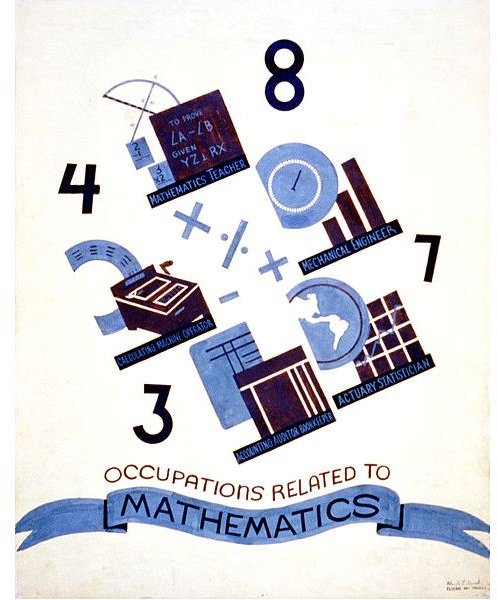What Is an Actuary & How Is It Different from a Statistician?
Understanding the Professional Skills of an Actuary
The actuary profession in America has been consistently rated as one of the top-paying jobs for college graduates. Yet, not so many are acquainted with this profession and the kind of work they actually do, thus, most people ask —“What is an actuary?”
An actuary is basically a practicing statistician who goes beyond the latter profession by using his mathematical prowess and broad range of knowledge to formulate solutions that would reduce the impact of the negative inferences he derived from his calculations.
But what is a statistician? A statistician is one who has a wide range of theoretical and applied mathematical skills, which he uses for analyzing statistical data that was shrewdly gathered. As a professional statistician, his objective is to establish the pattern of occurrences and deviations and calculate their recurrence by analyzing which of the underlying conditions allow the pattern to continue at specific points in time.
The difference between the actuary and the plain statistician is that the actuary will use his advanced mathematical learning, his knowledge about business and financial concepts, and an in-depth understanding of human behaviors and responses as a means to formulate solutions. His job as an actuary is to come up with plausible and compensatory programs that can control if not eliminate the risks established by way of his mathematical calculations.
The Origins and History of Actuary as a Profession

The word actuary was derived from the Latin word actum meaning public document, and it was used to distinguish an ordinary clerk or accounts keeper from a registrar who acted as keeper and recorder of public documents, particularly for Ancient Rome’s Senate body. Thus, the registrar was designated with the title actuarius.
As years passed, from around 1768 to 1827, the actuarial tasks became widely used in the world of modern insurance. The Equitable Life Assurance Society was the first to use the word actuary when referring to its mathematician William Morgan. The latter was the first to come up with the formulas for computing annual insurance costs pertaining to expected deaths.
Morgan kept different records as a means to manually mine statistical data, which he used for formulating the values imputed for annual insurance costs. His goal was to meet the claims over long-term insurances, with at least some measure of profit for the insurance company. Henceforth, the word actuary became widely adopted as the title of an insurance company’s mathematician. As history continued to unfold, the insurance business flourished into an industry that served almost all sectors and their needs for risk assurances.
However, certain events in the business world took place that made it imperative for most major organizations to determine their own risks and seek proactive solutions. Whereas before, insurance protection seemed to present a comfortable solution for loss-recovery against any untoward incident over life and property, an alternative solution was presented and became widely used — risk management..

The business scandals and accounting frauds of 2001 – 2002 were eye-openers for the business world. Financial losses, as it turned out, could come not only from random thefts, unexpected catastrophes, and natural calamities but from anywhere.
In line with this, the academic world and the Actuarial Students’ National Association (ASN) came up with a goal in 2005: It was to convince financial companies to hire actuaries as part of a risk management team. Back then, even major business industries had very little knowledge about what is an actuary in a larger sense of the word, aside from the actuary being an insurance professional.
ASN proposed a mutually beneficial arrangement in order to demonstrate the role of an actuary in other types of business industries. The proposal was for selected companies to provide internship venues for actuarial students, in consideration of the former’s high level of susceptibility to all types of risks. That way, the actuarial learners could perform the practical aspect of what they were being academically trained to do. At the same time, the business industry would be enlightened about the importance of managing risk as a proactive solution for providing investment protection.
Needless to say, the ASN’s underlying objective for its proposal was achieved, because by 2008 the number of actuaries employed reached 19,700 from its previous high figure of 9,400 in the early 1990s. The Bureau of Labor Statistics’ outlook report for the same year disclosed that of the 19,700, 55% were employed by major insurance companies; 16% found work in management, technical, and scientific consultancy services; and the rest worked for various government agencies and smaller scale insurance organizations, management firms, rating bureaus, and other enterprises. An estimated 21% job growth is expected to continue through 2018.
Career Outlook for Actuaries
Currently, the actuary profession’s growth is hampered not by lack of employment opportunities but by the shortage of qualified actuarial graduates to take on the open job positions.
Job opportunities for actuaries abound, of which the insurance industry still has the highest demand. Other sectors like health care providers, management consulting firms, human resource service providers, and business developers are among the top industry hirers. Today’s annual average salaries including bonuses, profit shares, and commission range from $56,375 - $111,447.
The information in this article is to furnish answers to the question –“What is an actuary?” in order to broaden actuary aspirants’ perceptions about the professional and mathematical skills they should possess. In addition, there is also the need to know more of the kind of traning and skills that actuarial students undergo. Readers who are interested to learn more about this profession and the roles actuaries play in today’s business world can find related information in separate articles entitled ”What Does an Actuary Do?” and “What Kind of Training or Schooling Does an Actuary Need?”
Reference Materials: and Image Credit Section:
References:
- Actuaries.Org.UK : Actuarial heritage collections and history —https://www.actuaries.org.uk/research-and-resources/pages/actuarial-heritage-collections-and-history
- Actuarial Students’ National Association Obejctives 2005 — https://www.anea-asna.ca/documents/2004-2005/Objectives_2004-2005_EN.pdf
- Occupational outlook handbook By Labor Department, Labor Statistics Bureau, United
States —https://www.bls.gov/oco/ocos041.htm - Salary Snapshot for Actuary Jobs: Updated January 07, 2011 —https://www.payscale.com/research/US/Job=Actuary/Salary
Image Credits:
- [Flickr -trialsanderrors - Occupations related to mathematics, WPA poster, ca. 1938](https://commons.wikimedia.org/wiki/File:Flickr_-_%E2%80%A6trialsanderrors_-_Occupations_ related_to_mathematics,_WPA_poster,_ca._1938.jpg)
- Wnętrze Kurii Forum Romanum
- Brandeis office 1916.
